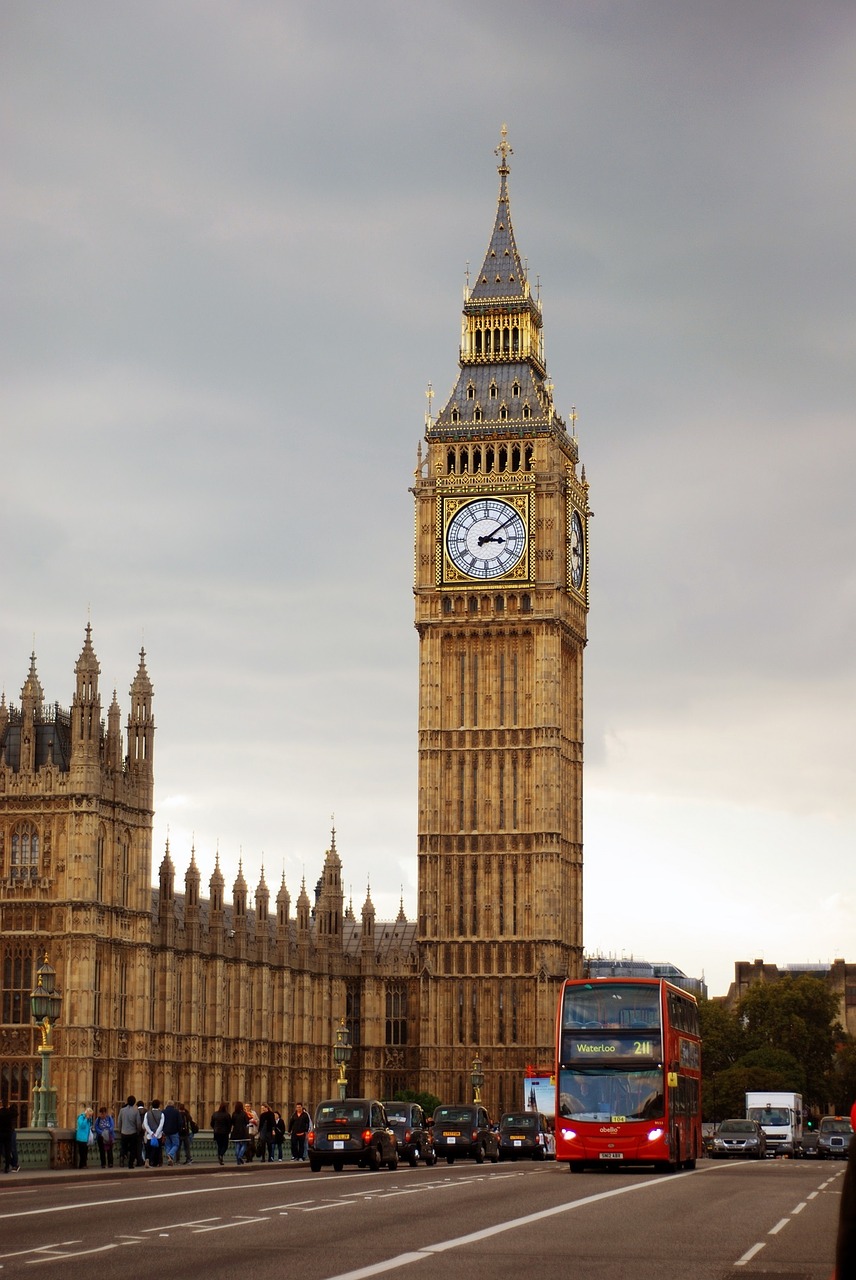Big Ben

Probably the most famous sight in London, the tower that adjoins the Houses of Parliament, whilst commonly referred to as “Big Ben”, is actually simply named the “Clock Tower”.
“Big Ben” is the name of the main 13.5 tonne bell, whose tolling tune is instantly recognisable.
The world’s largest four-faced chiming clock, the Tower is 96 metres high and each clock face is seven metres in diameter. The clock’s pendulum is just less than four metres long and weighs over 300 kilograms.
The Clock Tower is the main focus of the countdown to a New Year throughout the UK, with TV pictures beaming live across the world.
Within the Tower is a small prison room, which can be used to incarcerate members of the House of Lords or the House of Commons for unruly behaviour. The last MP to have stayed here did so in 1880 after refusing to swear an oath to Queen Victoria.
UK residents can arrange a tour of the Clock Tower through their local MP, although overseas visitors cannot currently enter the Tower.
History of Big Ben
Construction of the building began in 1837 under the direction of the talented architects Charles Barry and Augustus Pugin. It is true that it was then only called the Clock Tower. At the time, Queen Victoria had just begun her reign and held the throne for 63 years. The neo-style clock tower was designed to diversify the appearance of the architectural complex, making it fresher and more memorable.
For a time, the tower was successful and served as a prison for parliamentary prisoners who flouted the sessions. For example, a staunch feminist, Emmelin Panchers, who supported women’s rights, sat here. A memorial to her has been erected near the Palace of Westminster.
Each of the four dials of the Big Ben is engraved with the inscription, translated from Latin, “God save Queen Victoria I”, and on four sides of the building is the inscription “Praise the Lord”.
Although the tower is smaller than its neighbour, the Victoria Tower, for some reason it is adored by city dwellers. Big Ben has an inexplicable charisma that has left no traveller stranded for years.
The clock is set to Greenwich time, the most accurate in the world; the ideal movement has been well supported since 1854. The designers developed a very original and even risky mechanism: the key plant was not aperiodic, but doubled in three steps. This allows the pendulum to be optimally separated from the time mechanism. The pendulum, by the way, weighs 300 kg and is almost 4 metres long. It swings every two seconds.
When the decision was made to build the tower, the authorities promised to spend money only on the condition that the clock would be the most accurate in the world. The designers had to convince them. However, like all clocks, Big Ben began to break down. Although 2.5 seconds a day, the accuracy must be maintained. To do this, he uses a simple and ingenious method: the pendulum is inserted into an old British coin. A certain amount of time with a coin, the pendulum aligns the movement of the clock. This is how the mechanism has worked for more than a century and a half. Of course, the parts are regularly replaced or lubricated, these are necessary maintenance procedures.
On the shoulders of the Westminster clockmakers rests a huge responsibility each year: changing the great clock for daylight saving time AND the start of Greenwich Mean Time. This process requires great precision and accuracy. In addition, the clocks still serve over two thousand time mechanisms in the Houses of Parliament.
Why the name Big Ben
The answer to the question of why the bell was named Big Ben is not precise, although there are two versions. The first is that it is named after Lord Benjamin Hall. Allegedly, the meeting at which the bell’s name was chosen was so long that someone shouted from the hall, “and let’s name it Big Ben and calm!” Another version links a giant bell to a famous boxer from Benjamin County.
It was also suggested that it be named after Queen Victoria, but this option was not popular. In 2012, the building was renamed, officially giving its current name to Queen Elizabeth II of England. Of course, in people’s minds it has always been, and remains, Big Ben.
Video
How to get there?
The tower is just a few dozen metres from Westminster Underground station, which is served by three lines. The building is not open to tourist excursions for foreigners, this is a government decision.
Nearest Tube: Westminster
https://www.parliament.uk/bigben
https://goo.gl/maps/jGg19bDuWzZjVQw68
